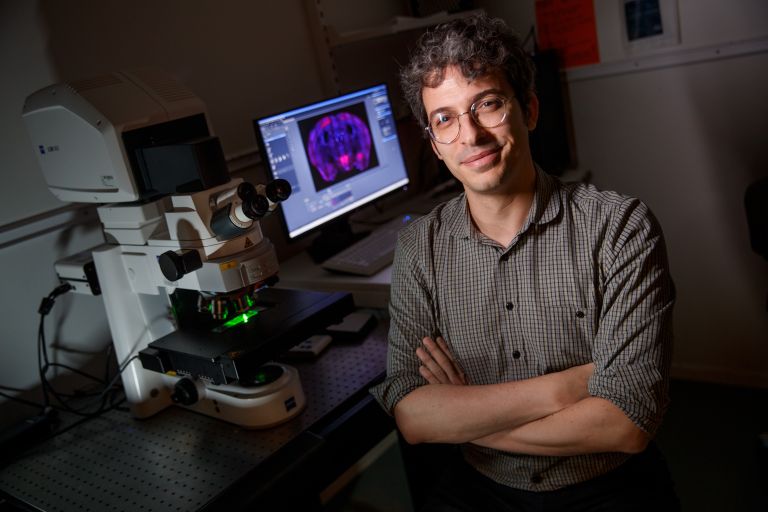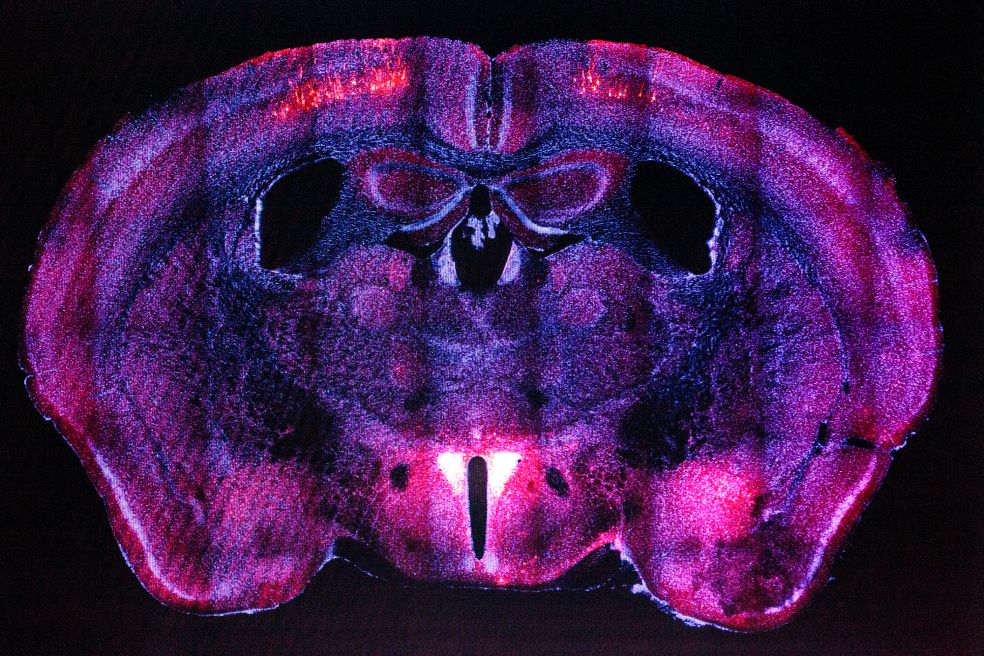
Alessandro Furlan
PhD, Molecular Neurobiology
Wallenberg Academy Fellow 2023
Institution:
Karolinska Institutet
Research field:
The neurobiology of energy balance and body weight


Wallenberg Academy Fellow 2023
Institution:
Karolinska Institutet
Research field:
The neurobiology of energy balance and body weight
Obesity and overweight increase the risk of serious diseases, such as diabetes, cancer and cardiovascular disease. Body weight is affected by how much energy we consume and how much we use – but it’s not quite that simple. The mechanisms regulating energy balance and body weight are complex and not yet fully understood.
Body fat is stored in fat cells, which accumulate in adipose tissue. Adipose tissue is not merely a passive energy store but an active organ that communicates with the brain via hormones and nerves. While the hormonal system is relatively well mapped, the role of nerves is less explored, as Furlan explains:
“We know that the brain and adipose tissue are connected by neuronal circuits that allow two-way communication, but we don’t know very much about how this system is organized and how it works.”
Furlan aims to fill this gap in our knowledge. His research as a Wallenberg Academy Fellow centers on mapping the neuronal circuits between the brain and adipose tissue and determining their function.
His hypothesis is that the neurons in the brain that connect to adipose tissue are specialized cell types that are crucial to the way the body regulates energy balance and weight. His research took this direction when he was a postdoc at Cold Spring Harbor Laboratory in New York, having received his PhD at Karolinska Institutet. He succeeded in identifying a specific group of neurons that seem to drive mice to eat fatty and sugary food – even when they are not hungry. The results were published in the prestigious journal Nature Neuroscience.

“When we inactivated these nerve cells, the animals were not attracted to the fatty, sweet food as much anymore. On the other hand, they moved around more and, as a result, they didn’t gain weight like the control mice did. It was a fascinating discovery, and I realized it was something I wanted to explore further.”
Furlan returned to Karolinska Institutet in 2022, and has now built up his own research team. He and his colleagues are studying mice, focusing on the fat tissues most relevant to human health, such as abdominal fat. They are tracing the neuronal circuits from the animals’ adipose tissue to the brain, using a genetically modified virus that travels along the neurons, giving off fluorescent light as it does so.
“Wow – look at those neurons up there! I like those,” says Furlan enthusiastically, pointing to a microscope image in which green dots reveal neuronal cells in the brain of a mouse.
The researchers use an instrument known as a confocal microscope to create detailed three-dimensional images of the animals’ brains and identify the neurons that are connected to the adipose tissue. Then, the team uses a set of engineered viruses to study these neurons further. The virus is only expressed in selected, fat-traced, cells in genetically modified mice. This enables the researchers to turn those specific neurons on or off at command and test their function in behavior and metabolism – for example, when the mice are given a high-fat diet.
We want to find the key to limiting the growth of adipose tissue without disrupting other bodily functions.
“We examine the weight, metabolism and behavior of the mice to see what happens when we switch the cells on or off – does fat storage increase so that the mice gain weight, or is fat prevented from accumulating so they stay lean? We are trying to find out whether such neurons are involved in processes such as fat storage or fat burning.”
This is not an easy puzzle to solve. There are many types of adipose tissue, and the nerves within them lead not just to one point in the brain but are connected to many different groups of neurons.
“It’s extremely challenging but also very exciting. We believe there are different neural circuits, each with their own function, but that also interact to regulate the energy balance.”

Furlan wants his research to generate new knowledge about the mechanisms that regulate energy balance and body weight. This could create a platform for better treatments for obesity and other weight-related diseases. He elaborates:
“If we can identify neurons that control the function of adipose tissue, we may be able to develop drugs that specifically influence their activity. That would enable us to regulate fat mass without disrupting other bodily functions.”
Naturally, reaching this goal involves a journey that is long and full of uncertainty. But that suits Furlan, who describes himself as a curious person who doesn’t like to give up.
“I’m quite persevering, which is a good thing, because this kind of research takes time. The Wallenberg grant has given me the stability and resources to dream big – and that’s when breakthroughs can occur.”
Text Sara Nilsson
Translation Maxwell Arding
Photo Magnus Bergström